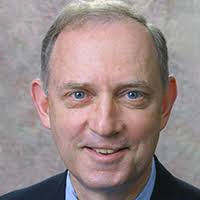
Dr. Bonow is a Goldberg Distinguished Professor of Cardiology at Northwestern University Feinberg School of Medicine; and currently on staff at Northwestern Memorial Hospital. He began his presentation by informing us that the pandemic has resulted in the entire world sharing data, so treatment and vaccines may be developed faster than otherwise possible. He reported that cases are declining in Illinois, but deaths are not. He believes the virus will be active in the population at least through August. New York, the former hotspot, is seeing declines in new cases, but in most other states new cases are on the rise.
Dr. Bonow said there are three strains of the current virus in Illinois: 50% of the strains are the same as in New York; 35% the same as Washington State; and 15% are a unique mutation. There are approximately 20 strains of this virus worldwide.
He advised us that the usual symptoms of fever, shortness of breath, coughing, and fatigue are not reliable symptoms of the virus. Many infected people have shown other or no symptoms. He described some of the extra effects of the virus, like liver and kidney damage, pneumonia, respiratory disease, and Kawaski-like disease in children.
He offered examples of countries that have fewer cases, like Germany who tested early and extensively, contrasted with rampant cases in the UK where testing was not done and precautions were not exercised early enough. The same was true of Iceland with extensive testing and few cases, vs. Netherlands with less testing and many cases.
He went on to explain the structure of the virus, and how it attaches to a receptor on the surface of a cell which allows the virus to enter the cell. Vaccines are being developed to try to block this attachment, as well as other methods to thwart the virus. A vaccine is at least a year away from being developed and tested enough for distribution.